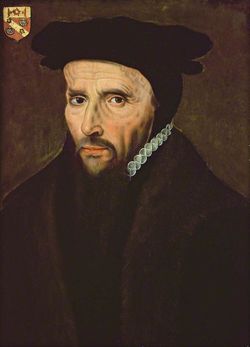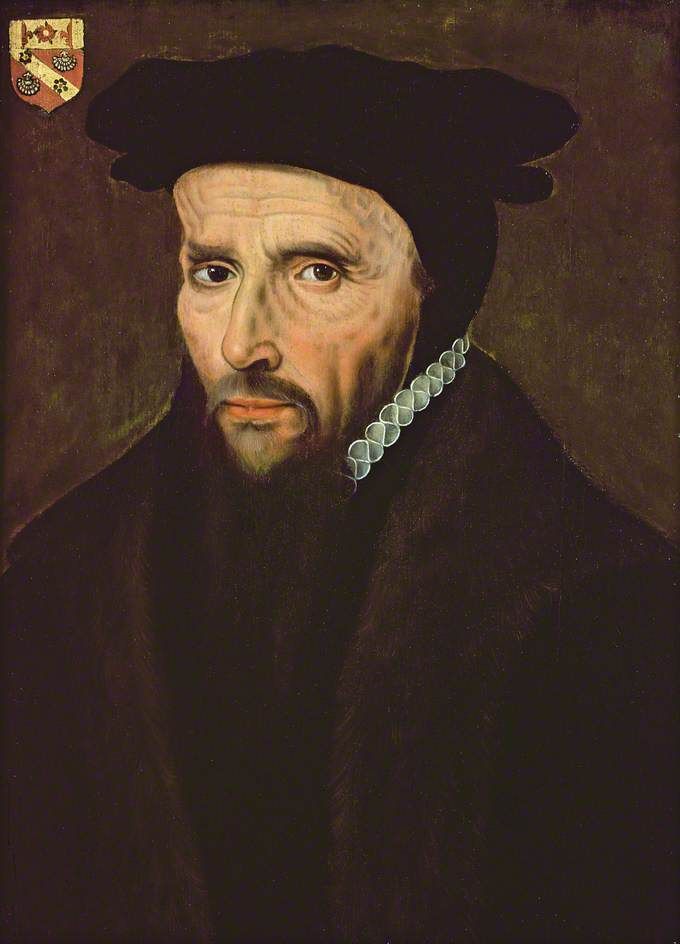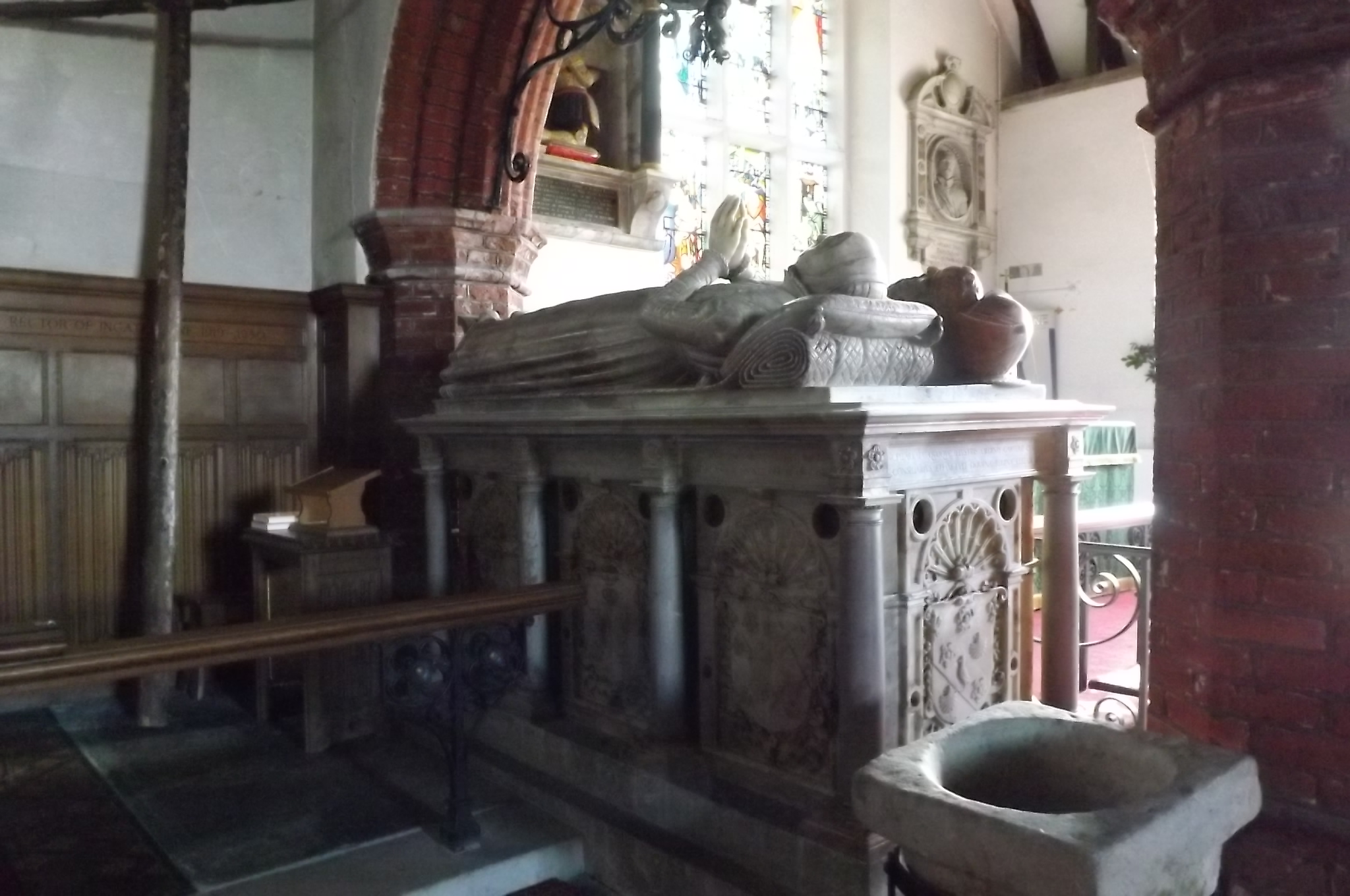The Reformation Period and Penal Times (1539-1688)
In 1539 Sir William Petre, a native of Devon and a servant of successive Tudor monarchs, bought the Manor of Gynge Abbes. The manor had formerly belonged to the nuns of Barking Abbey, which had recently been suppressed on the orders of King Henry VIII. It was not unusual in these troubled times for what would nowadays be termed ‘civil servants' to purchase confiscated monastic lands. For the survival of Catholicism in Ingatestone, however, Petre's action was providential. Not only did it lead to the building of Ingatestone Hall, but it heralded the establishment of the Petre family as the chief source of patronage and protection in Essex for those who remained loyal to the Catholic Faith and resisted the imposition of the Established Church under Henry VIII and Elizabeth I. Sir William was, in many respects, a ‘great survivor' in the political sense, and he played his religious cards close to his chest. However, his wife, Lady Anne Petre, was a leading recusant (i.e. one who refused to conform to the new religious settlement). It was she who, after the death of her husband in 1571/2, emerged as a staunch defender of Catholicism in the local area. In the late 1570s St John Paine, a seminary priest and one of the Forty Martyrs of England and Wales (put to death at Chelmsford on 2 April 1582 and canonised by Pope Paul VI in 1970), lived at Ingatestone Hall where, having assumed the identity of an estate steward, he ministered to Catholics in the vicinity. In 1603 Sir John Petre, the son of Sir William and Lady Anne, was created Baron of Writtle by King James I. Maintaining his family's Catholic allegiance in the aftermath of the Gunpowder Plot of 1605, in 1613 he was succeeded by his son William, 2nd Lord Petre, another firm Catholic and a great benefactor to the Society of Jesus (Jesuits).In the reign of King Charles I, and even more so during the period of the Commonwealth under Oliver Cromwell, attitudes towards Catholics hardened. Nevertheless, the Petre family at Ingatestone Hall and at nearby Thorndon, near Brentwood, continued to support their co-religionists. William, 4th Lord Petre, was imprisoned in the Tower of London after the Titus Oates Plot of 1678 and died there in 1684. Thomas, 6th Lord Petre, was a close associate of the Catholic King James II (1685-1688). For obvious reasons, few records of the Catholic mission at Ingatestone survive from this period, but the list of priests known to have served there - as opposed to domestic chaplains to the Petre family - begins in 1688 with the Jesuit Father Richard Levison.
The Reformation Period and Penal Times (1539-1688)
In 1539 Sir William Petre, a native of Devon and a servant of successive Tudor monarchs, bought the Manor of Gynge Abbes. The manor had formerly belonged to the nuns of Barking Abbey, which had recently been suppressed on the orders of King Henry VIII. It was not unusual in these troubled times for what would nowadays be termed ‘civil servants' to purchase confiscated monastic lands. For the survival of Catholicism in Ingatestone, however, Petre's action was providential. Not only did it lead to the building of Ingatestone Hall, but it heralded the establishment of the Petre family as the chief source of patronage and protection in Essex for those who remained loyal to the Catholic Faith and resisted the imposition of the Established Church under Henry VIII and Elizabeth I. Sir William was, in many respects, a ‘great survivor' in the political sense, and he played his religious cards close to his chest. However, his wife, Lady Anne Petre, was a leading recusant (i.e. one who refused to conform to the new religious settlement). It was she who, after the death of her husband in 1571/2, emerged as a staunch defender of Catholicism in the local area. In the late 1570s St John Paine, a seminary priest and one of the Forty Martyrs of England and Wales (put to death at Chelmsford on 2 April 1582 and canonised by Pope Paul VI in 1970), lived at Ingatestone Hall where, having assumed the identity of an estate steward, he ministered to Catholics in the vicinity. In 1603 Sir John Petre, the son of Sir William and Lady Anne, was created Baron of Writtle by King James I. Maintaining his family's Catholic allegiance in the aftermath of the Gunpowder Plot of 1605, in 1613 he was succeeded by his son William, 2nd Lord Petre, another firm Catholic and a great benefactor to the Society of Jesus (Jesuits).In the reign of King Charles I, and even more so during the period of the Commonwealth under Oliver Cromwell, attitudes towards Catholics hardened. Nevertheless, the Petre family at Ingatestone Hall and at nearby Thorndon, near Brentwood, continued to support their co-religionists. William, 4th Lord Petre, was imprisoned in the Tower of London after the Titus Oates Plot of 1678 and died there in 1684. Thomas, 6th Lord Petre, was a close associate of the Catholic King James II (1685-1688). For obvious reasons, few records of the Catholic mission at Ingatestone survive from this period, but the list of priests known to have served there - as opposed to domestic chaplains to the Petre family - begins in 1688 with the Jesuit Father Richard Levison.
Inscription
"Here lie interred Wm. Lord Petre, Knight, with dame Ann, his second wife, daughter of William Browne, who died Mayor of London. The aforesaid nobleman William Lord Petre was by summons from Henry King of England, the eighth of that name, called to the office of Secretary, and to be one of His Majesty's Privy Council, in which station he continued under King Edward the Sixth, by whom he was made Treasurer of the first-fruits and tenths. After the death of Edward, he held the same offices under Queen Mary, which she conferred upon him, together with the Chancellorship likewise of the most noble order of the Garter. He was, too, one of the council of our Lady Queen Elizabeth."
Family Members
Advertisement
Records on Ancestry
Sponsored by Ancestry
Advertisement







